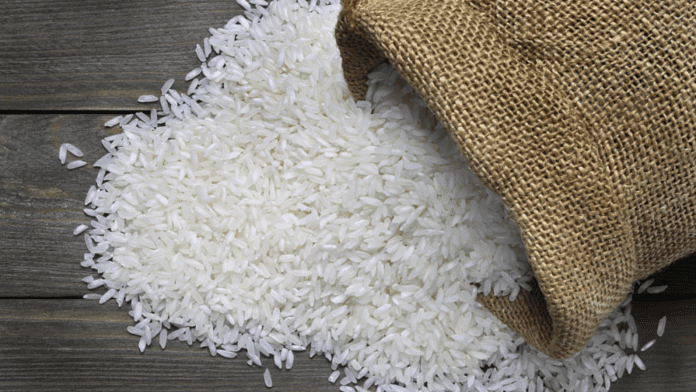The Indian government, in a recent decision, has taken the step of prohibiting the export of non-basmati white rice, as mentioned in a notification issued by the Directorate General of Foreign Trade on Thursday.
“Export policy of non-basmati white rice (semi-milled or wholly milled rice, whether or not polished or glazed)…is amended from free to prohibited,” the DGFT said in a notification.
However, it will allow the export of consignments of this rice under certain conditions, such as cases where the loading of the rice onto the ship had already commenced before the notification was issued.
According to a previous report by the news agency Bloomberg, the Indian government was contemplating a potential ban on exports of most rice varieties. Such a ban could have significant ramifications, potentially affecting approximately 80 percent of India’s rice exports. While it might lead to reduced rice prices within India, there is a concern that it could have adverse effects on global prices.
Uneven distribution of rainfall in the key rice-growing areas of the country has resulted in a price hike of the grain by up to 20% in the last 10 days, as reported earlier by SnackFax.
Read More: Erratic rainfall causes 20% surge in rice prices within 10 days
According to a report by Reuters, rice prices for exports from Vietnam have surged to their highest levels in over a decade this week. The increase in prices is attributed to growing supply concerns arising from the El Nino weather pattern, coupled with India’s decision to impose restrictions on rice exports. Traders have pointed out that the news about India’s potential move to curb exports has further contributed to the upward trend in prices. As a result, traders anticipate that prices will continue to rise if India indeed limits its rice exports.
Meanwhile, rice planting in India has gained momentum with the revival in monsoon rainfall over the past fortnight.
In September 2022, India, renowned as the world’s largest rice exporter, took significant measures to address production concerns. It decided to prohibit the export of broken rice and levied a 20% duty on the export of several other rice grades. These measures were implemented as a response to the challenges faced in rice production at the time.
B.V. Krishna Rao, president of the Rice Exporters Association (REA) said a government move to increase paddy procurement price had been pushing up rates. “But, the government is holding more stocks than needed for welfare schemes. There is no need to restrict exports,” he told Reuters.
Last week, India’s rice export prices continued their upward trend for the seventh consecutive week, reaching a level not seen in over five years. The surge was driven by diminishing supplies as reports emerged that the country was contemplating a ban on exports for most rice varieties. This potential measure was being considered as a means to curb inflationary pressures in the country.


